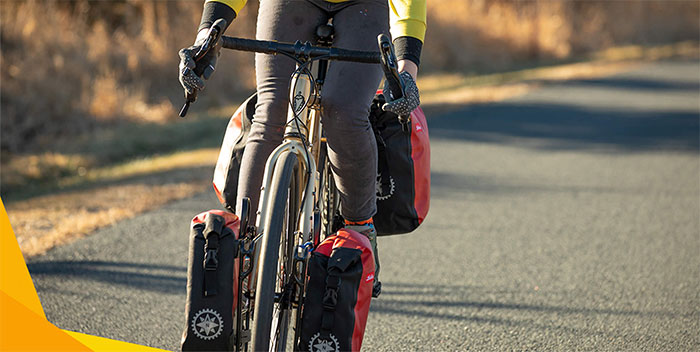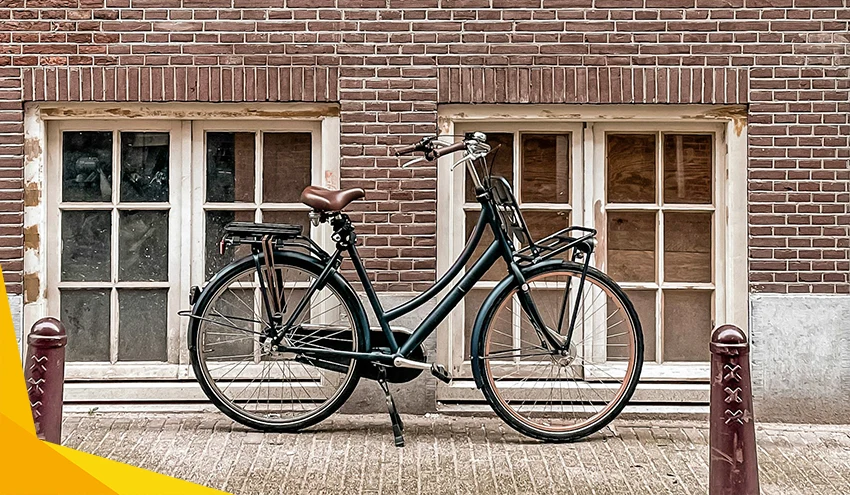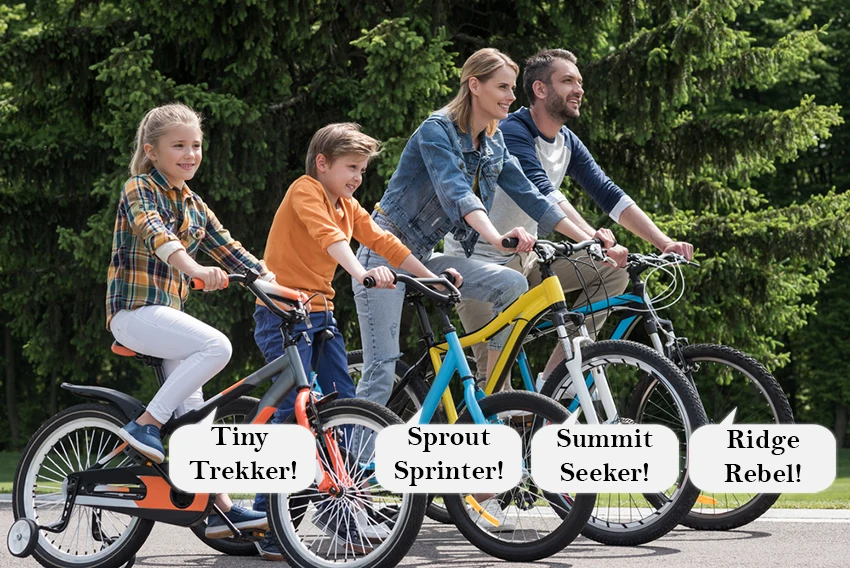Are you looking into the age-old touring bike vs road bike discussion and want to learn the main differences? You’ve come to the right place!
We’ll be looking at what the main differences are between touring and road bikes, as well as the similarities.
Which bike is going to be right for you?
Let’s find out!
Contents
What Is A Road Bike?
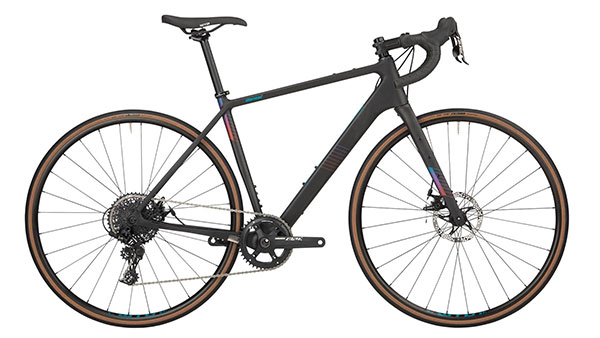
When you think of a road bike, a few words should come to mind. Style. Efficiency. Speed.
Their narrow tires and aerodynamic design mean that road bikes are quicker than touring bikes.
The geometry of road bikes is all about efficiency when on the road. If you have never ridden a road bike before, you might find that the position is quite different.
There are so many different types of road bikes. Depending on what your interests are will depend on which is right for you.
Endurance road bikes have different geometry than race road bikes. Endurance is about being in the saddle for longer so you sit slightly more upright than on a racing bike.
Time trial bikes are potentially the most uncomfortable bikes around, where the rider is tilted forward, heavily. Everything is about being as aerodynamic as possible. Comfort is secondary.
Tires on road bikes will be narrow, and the grip won’t be huge, this is to increase your speed. Again, if you’re not used to this, it can seem odd but something you get used to quickly.
Due to the fact, that there are so many different types of road bikes, you are likely to find something that suits you if you want to ride on the road that is.
If speed is your thing, then a road bike is your thing.
What Is A Touring Bike?
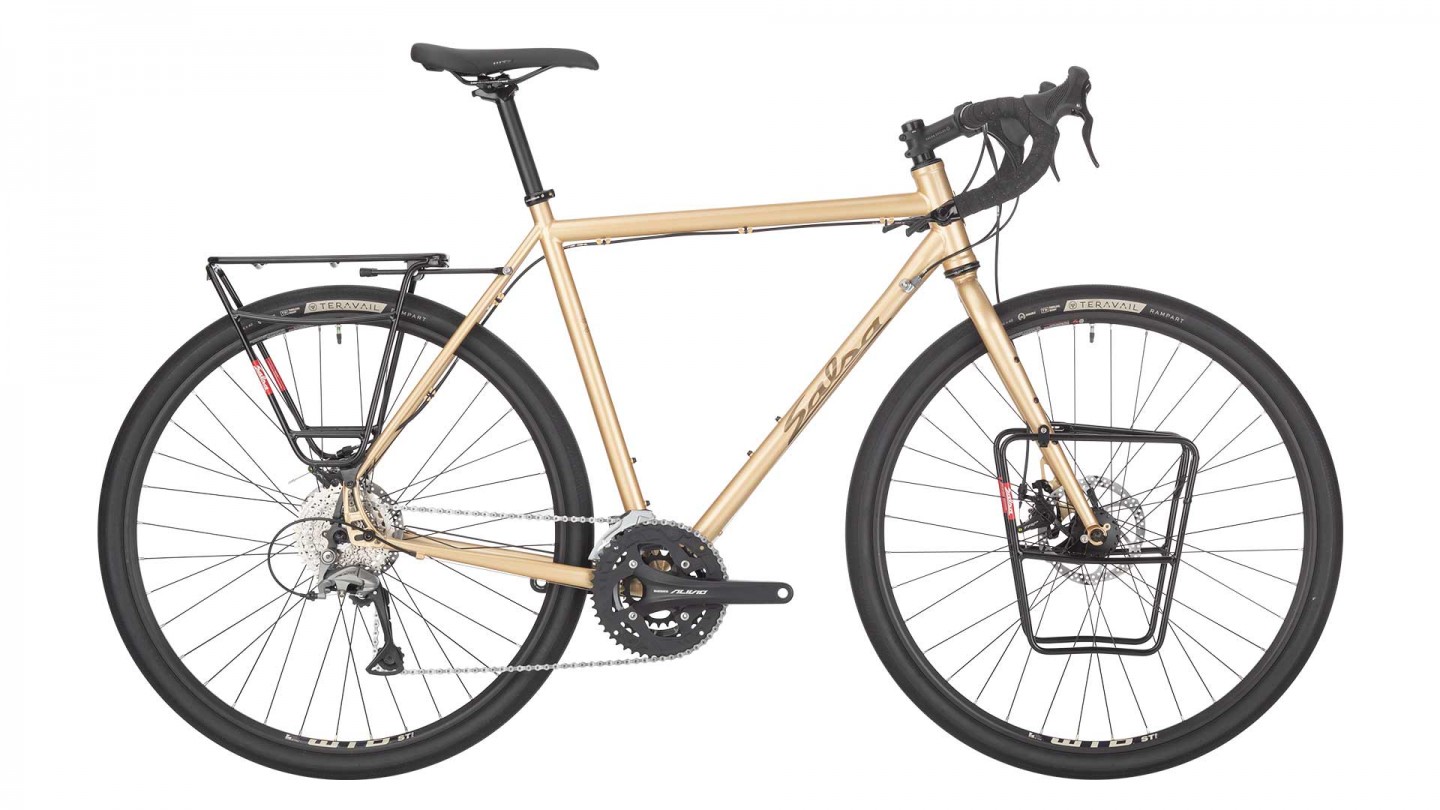
A touring bicycle is designed with traveling in mind. However they do vary a lot and what characteristics your touring bike will have, will depend on what type of traveling you have in mind.
In short, touring bicycles are intended for cyclists who enjoy long adventures in the saddle, with luggage, on predominately paved surfaces.
The frame of a touring bike is designed so that even when your bike is fully packed, you will still be able to steer without issue and safely. A lot of this is down to the geometry being different in the sense that the chainstays are longer so your clearance between feet and saddlebags is greater.
A longer wheelbase also improves stability. Something that you will appreciate on a fully loaded bike!
Something you don’t get on other types of bikes to the same degree is the number of attachment points. Touring bikes are all about attaching things to your bike. Saddlebags, bottle holders, mudguards. Intended to take them all and not complain!
When it comes to steep terrain, touring bikes excel. This is usually down to the gearing (more on this later).
A touring bike is an ideal bike for people who are wanting to travel a lot by bike. You can (with plenty of planning) take a trip for months at a time on a touring bike.
Touring Bike vs Road Bike: The Main Differences
At first glance, road and touring bikes can look similar but clearly different, and each with its own job to do.
Having toured on a bike for a week around South Africa, and, spent many hours on road bikes, I can tell you firsthand the key differences between a touring bike and a road bike.
Road bikes are made to be lightweight, to be quick, and stiff. They are also meant for riding on paved surfaces. A road bike is good for racing. On the flip side, a touring bike is built for strength, comfort, and stability. Touring bikes are capable of carrying heavier loads and will do so for days, weeks, or months.
But let’s take a closer look at some of the more detailed aspects of them.
Geometry

Road bikes are all about putting you in an aerodynamic position. This allows you to reach higher speeds more quickly and maintain them.
The thing is, if the geometry is specifically designed with racing in mind, then the comfort of the rider isn’t at the forefront of the design. For some people, this is fine and worth the compromise.
A touring bike geometry tends to feature a longer wheelbase when compared to a road bike touring frame. The chainstays are often longer as well as the bottom bracket is lower. All of this is to ensure the comfort of the rider, especially when it comes to long days in the saddle.
What this type of bike geometry also does is increase the distance between the rear axle and your feet.
Why is that good? If you want to attach panniers or luggage to the rear of your touring bike, you won’t have any issues with your feet catching the pannier as you pedal.
You will find that touring bike frames are often made from steel or aluminum. Steel is quite often preferred for cyclists as it is good at absorbing vibrations.
Aluminum doesn’t have quite the same absorbing tendencies as steel. Nor does carbon fiber, which is what higher-end road bike frames are made from.
Components
When it comes to brakes and gears, road bikes and touring bikes share a few qualities.
For gearing, it’s very common to see both roads and touring bikes with a 2x setup. By 2x setup, I mean the number of front chainrings.
A road bike will most likely have an 11-speed cassette at the back. This ought to be sufficient for the majority of cyclists as they will be able to achieve high speeds and tackle steep hills.
Touring bikes are similar but you have to factor in that the frame is heavier and you’re likely to be carrying luggage too so your average speed will be slower when compared to a road bike.
It’s not uncommon to see touring bikes with compact cranksets, allowing riders to get up steeper climbs.
You may find bikes with a 3x setup. These are good for cyclists who are wanting to take on tougher terrain.
The additional front chainring is smaller than 34t so you’ll be able to keep pedaling at slower speeds. However, you aren’t likely to see this setup on a road bike, but they are available on some hybrid bikes.
Disc brakes are commonplace on both road and touring bikes. They perform better than rim brakes in almost every situation.
Saying that, older road bikes do use rim brakes and I can’t deny that they are cheaper and easier to maintain than disc brakes. Though their performance does let them down, especially if you find yourself riding in wet conditions.
When it comes down to it, disc brakes do outperform rim brakes.
If you are intending to be pretty much off-grid, there is an argument that rim brakes could be the brake choice for you as they are easier to maintain when you are in the middle of nowhere, otherwise, stick to disc brakes.
Tires
This is where a touring bicycle and road bike differ.
Tires on a road bike are often slicks or semi-slicks. This means that there is little tread on the surface of the tire. This tread is there to provide grip to the ground. Having little grip means less rolling resistance so achieving greater speeds is easier.
The frame of touring bikes will have space to accommodate wider tires and the tread will be thicker. This is essential for the terrain you might encounter on a touring bike.
Even if you intend to stick to paved surfaces, the extra weight of any luggage makes the grip much needed. The extra width of the tires also decreases your chances of a puncture too.
When it comes to tire pressure, the ideal road bike tire pressure is around 90 – 110psi, whereas touring cyclists can run at lower pressures. This is good as it increases your comfort on the bike and also reduces your chances of punctures.
Learn more: Tire Pressure Explained
One other thing to consider is whether or not to run a tubeless setup. It’s more commonly found on touring bikes. However, more road cyclists are switching to tubeless tires – myself included.
It does add a little extra weight. Not noticeable (in my opinion) and the chances of a puncture are much reduced. I haven’t (yet) had one that has caused me to stop since I made the switch to tubeless tires.
Uses
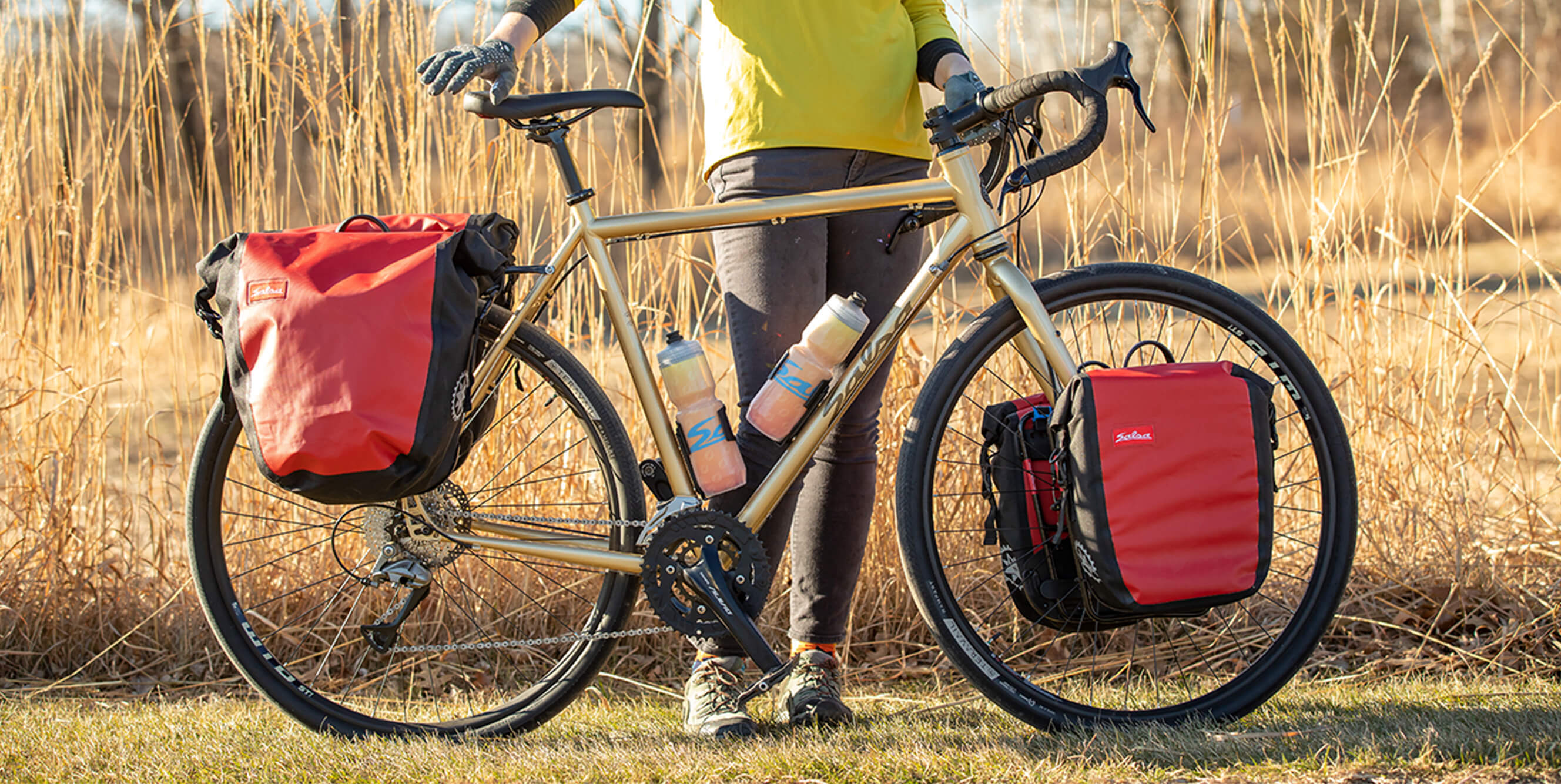
Road bikes were created to take the rider as far and as quickly as they can manage, on smooth surfaces. No surprise that the name came from the type of terrain it’s used on, road.
Road bikes are largely broken down into two categories; racing and endurance. Though there is also time trial and gravel in the mix too.
Read more: Gravel Bikes vs Road Bikes
These types of bikes are all the same in the sense that they are to be ridden on smooth, paved surfaces.
When we compare the two – touring bike vs road bike – touring bikes are sort of what road bikes used to look like when they first became a thing. What I mean by that is the wheelbase is long, they have mudguards and often a steel frame.
Touring bikes excel at being versatile and durable as a result of this. Making them perfect for multi-day trips, especially with the addition of eyelets so you can load everything up for your adventure.
Not stopping at multi-day trips, touring bikes are also good for commuters, and gravel.
Frequenty Asked Questions
Are touring bikes the same as road bikes?
Touring bikes and road bikes do look similar from a distance. However touring bikes are made from stronger materials and are more durable.
When you do a bike geometry comparison, you will see that a road bike has a more aggressive, aerodynamic position for the rider.
Can a road bike be used for touring?
Yes, you can use a road bike for touring. Though do keep in mind that road bikes are designed to be ridden on smooth surfaces so they may not be as comfortable on rougher terrain.
You should also consider where you will store your luggage. Does your road bike have eyelets for mounting panniers? Road bikes rarely do.
Is a road bike faster than a touring bike?
A road bike is faster than a touring bike as road bikes are designed to be as aerodynamic as possible. They also are lighter and have smoother tires, allowing you to achieve greater speeds and maintain those speeds.
Is a road bike good for long rides?
Road bikes can be good for long rides. However, ideally, you don’t want to be carrying much as you are limited in places to store it on a road bike.
All-day rides are no problem on a road bike.
What is a touring bike good for?
Touring bikes are perfect for long adventures on a bike. If you want to go away somewhere for a week or more, a touring bike will allow you to carry everything you need and you’ll be comfortable!
Are touring bikes more comfortable?
Touring bikes can be more comfortable than road bikes. This is due to the geometry of the bikes. Touring bike geometry is more relaxed and allows the rider to sit more upright, which tends to be more comfortable.
Are touring bikes slow?
Touring bikes aren’t slow. Often they have the same gearing as road bikes. They do tend to be slower than road bikes due to the frame material, tires, and additional items such as panniers, which add extra weight.
Can touring bikes go fast?
Absolutely, yes!
Now obviously if you weigh a touring bike down with fully loaded panniers, you’re going to have to work hard. But if you’re not carrying anything, then touring bikes can achieve a good speed.
How many gears should a touring bike have?
Lots of touring riders like to have plenty of low gears. Having said that, the number of gears on a touring bike, will depend on the type of riding you do.
Why are touring bikes so heavy?
Touring bikes can be heavy if the frame is built from steel as this is a heavy material. Though very durable and comfortable.
Are touring bikes hard to ride?
No, touring bikes are not hard to ride. Do ensure that if you are adding panniers to a touring bike you fit them correctly as this can cause you to be unstable. This is when riding a touring bike can be difficult.
How long does a touring bike last?
Touring bikes should last for many years. Decades if you look after it correctly.
As with many things, if you look after and maintain a touring bike, it will last for years.
Unlike carbon fiber frames, aluminum or steel frames are hard-wearing.
Conclusion
So that’s it, touring bike vs road bike, the main differences.
Both bikes are designed for different types of riding so it’s important to get the right type. However, a touring bike works well as a commuter bike on the road.
At a push you can use a road bike as a touring bike. I wouldn’t recommend you do this long-term though!
Where’s your next adventure?

